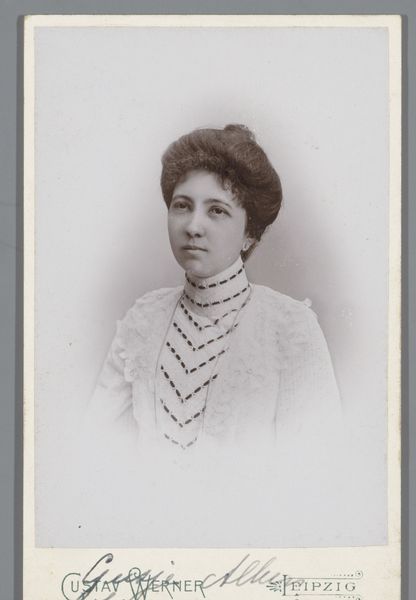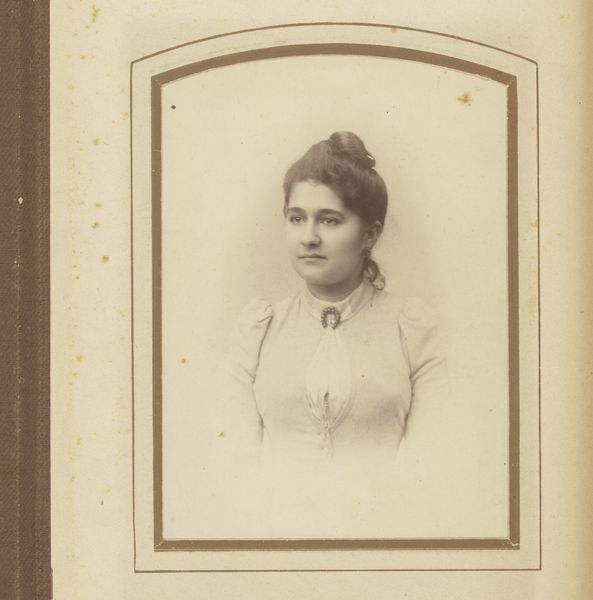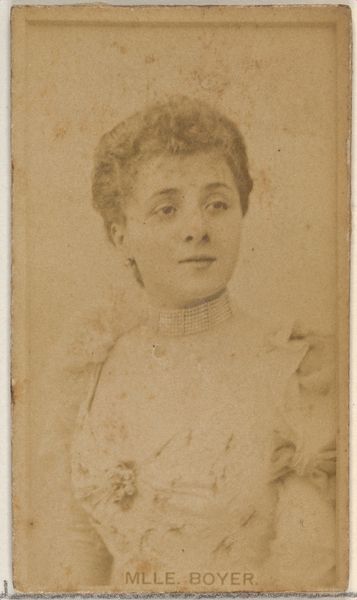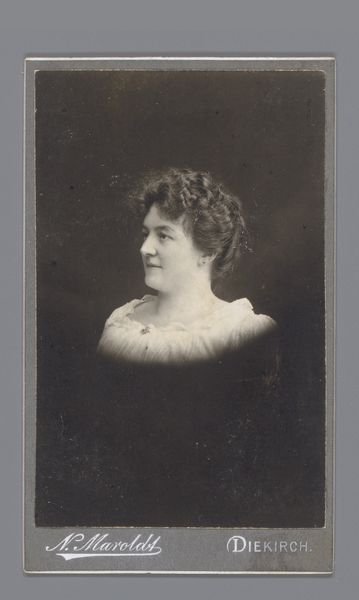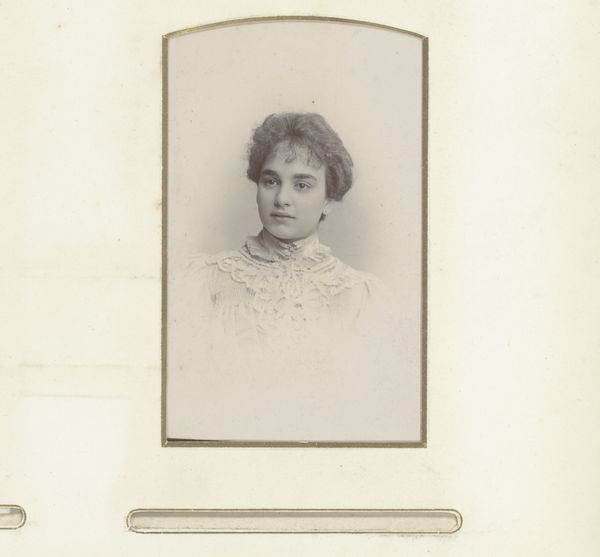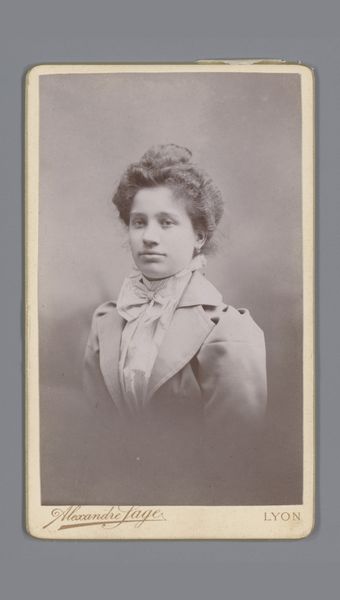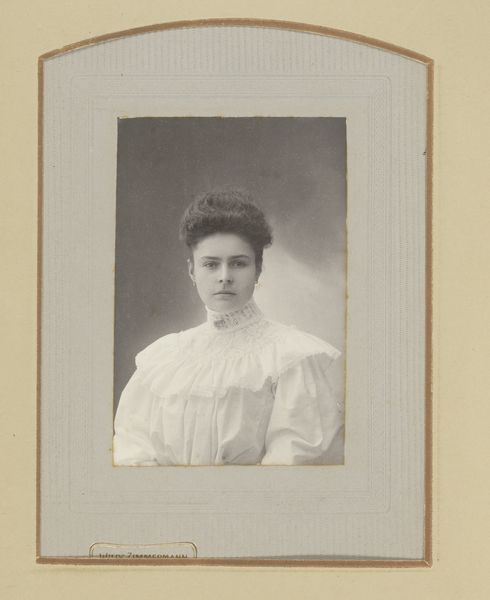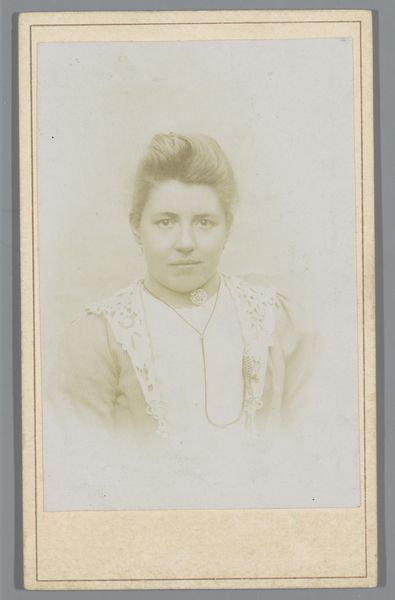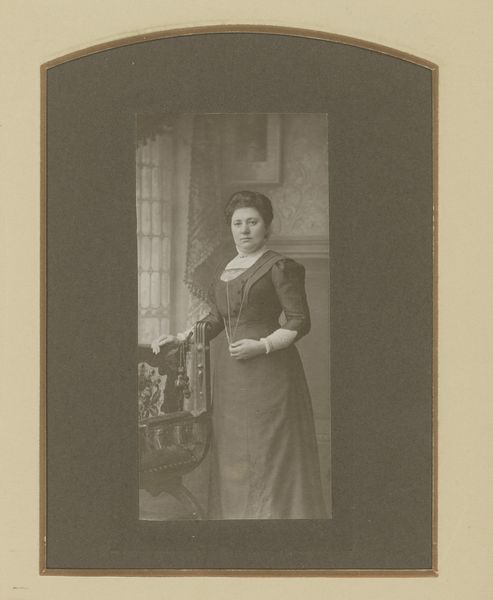
photography, albumen-print
#
portrait
#
photography
#
albumen-print
Dimensions: height 106 mm, width 64 mm
Copyright: Rijks Museum: Open Domain
Editor: So, this albumen print portrait, titled "Portret van een onbekende jonge vrouw", dates to between 1900 and 1914. I’m struck by its formality, yet also the slight blurring, hinting at movement and disrupting that strict pose. What do you see in it? Curator: I am drawn to consider the labour embedded within this object. The albumen print, a popular photographic process during this era, reveals so much. Think about the process of making this object. From preparing the glass plate negatives, mixing and coating them with albumen—derived from egg whites—then exposing and developing each print. It was intensive labour. Editor: Egg whites, really? That is fascinating, I did not know that. How would you then relate such means of production to consumption at that time? Curator: Well, portrait studios like veuve Soyer democratized image production. The rise of the middle class created a demand for affordable portraiture, impacting the labour of photography. Albumen prints were mass-produced to feed into that consumerism. Note that the backdrop appears to be dark. I am curious about the staging and props used to construct this idealized vision of young womanhood, particularly how she is adorned and costumed. Can we understand these decisions about attire within its consumerist drive? Editor: Interesting point about consumption and image making, especially how studio portraits can tell us about societal aspirations. This print certainly expands what it means to see an ‘image’. Curator: Indeed. By examining the materials and mode of its production we better appreciate its impact and purpose in this moment of consumerism.
Comments
No comments
Be the first to comment and join the conversation on the ultimate creative platform.




